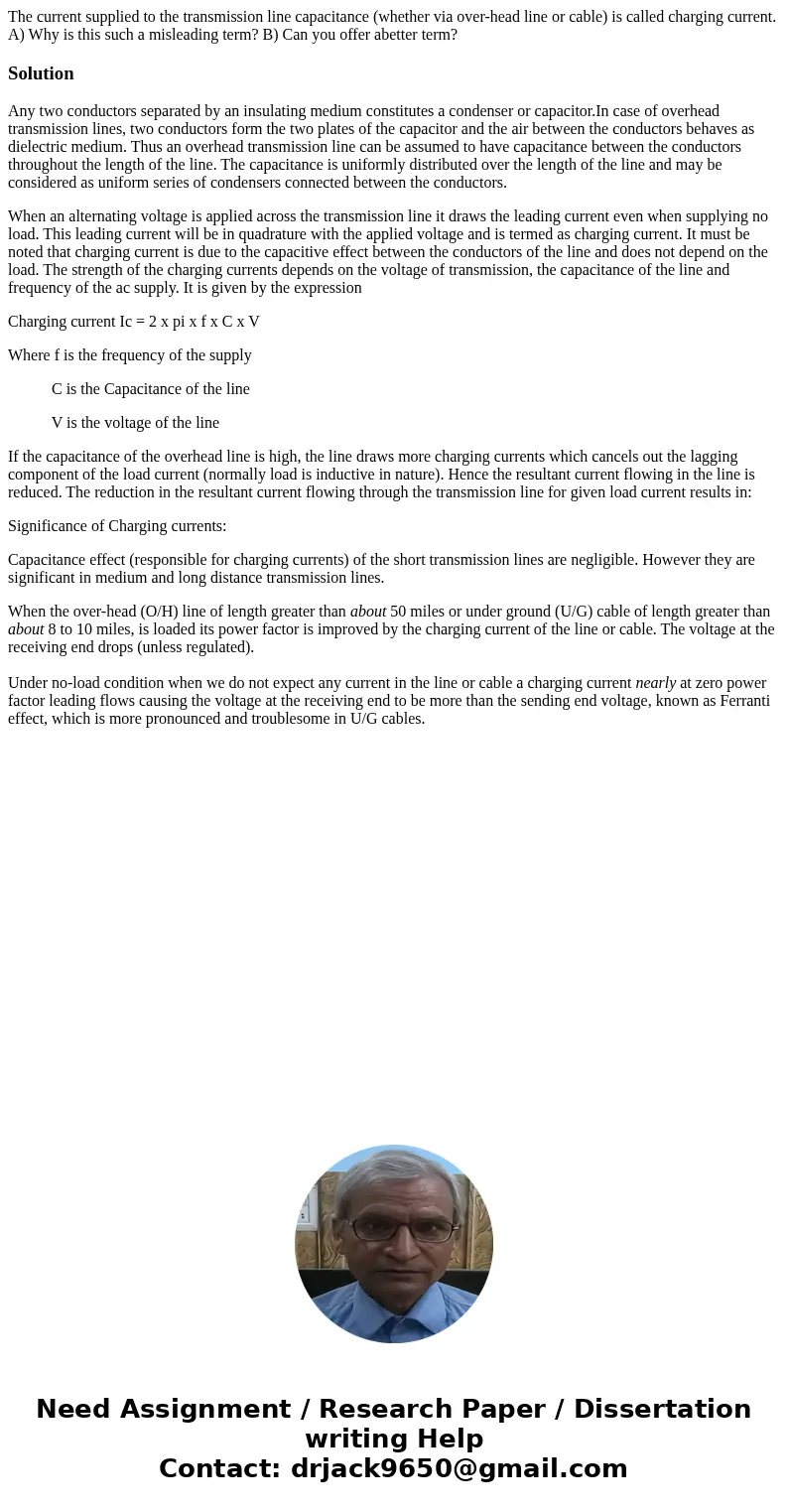The current supplied to the transmission line capacitance wh
Solution
Any two conductors separated by an insulating medium constitutes a condenser or capacitor.In case of overhead transmission lines, two conductors form the two plates of the capacitor and the air between the conductors behaves as dielectric medium. Thus an overhead transmission line can be assumed to have capacitance between the conductors throughout the length of the line. The capacitance is uniformly distributed over the length of the line and may be considered as uniform series of condensers connected between the conductors.
When an alternating voltage is applied across the transmission line it draws the leading current even when supplying no load. This leading current will be in quadrature with the applied voltage and is termed as charging current. It must be noted that charging current is due to the capacitive effect between the conductors of the line and does not depend on the load. The strength of the charging currents depends on the voltage of transmission, the capacitance of the line and frequency of the ac supply. It is given by the expression
Charging current Ic = 2 x pi x f x C x V
Where f is the frequency of the supply
C is the Capacitance of the line
V is the voltage of the line
If the capacitance of the overhead line is high, the line draws more charging currents which cancels out the lagging component of the load current (normally load is inductive in nature). Hence the resultant current flowing in the line is reduced. The reduction in the resultant current flowing through the transmission line for given load current results in:
Significance of Charging currents:
Capacitance effect (responsible for charging currents) of the short transmission lines are negligible. However they are significant in medium and long distance transmission lines.
When the over-head (O/H) line of length greater than about 50 miles or under ground (U/G) cable of length greater than about 8 to 10 miles, is loaded its power factor is improved by the charging current of the line or cable. The voltage at the receiving end drops (unless regulated).
Under no-load condition when we do not expect any current in the line or cable a charging current nearly at zero power factor leading flows causing the voltage at the receiving end to be more than the sending end voltage, known as Ferranti effect, which is more pronounced and troublesome in U/G cables.

 Homework Sourse
Homework Sourse